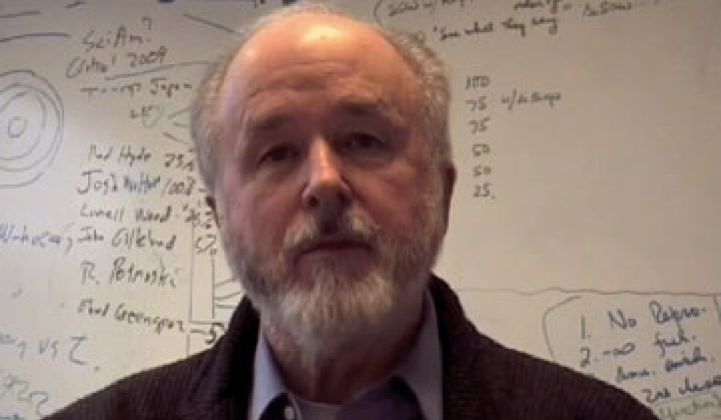TerraPower, the nuclear spin-out from Intellectual Ventures, is in preliminary talks with Toshiba about developing a modular reactor in tandem.
It's a good sign for the modular nuclear industry. These companies hope to produce reactors that can put out 25 to 125 megawatts of power and are about the size of a hot tub or conference room. The reactors can be deployed independently or chain-ganged together to generate as much power as a conventional nuclear plant.
The key is in the construction. The design of a modular reactor can be certified independently. The manufacturer can then produce a number of the reactors and build a power plant in less time and for less money than it would take for a conventional nuke. Thus, you can expect other large nuclear companies like Areva to make similar deals.
The small nuke advantage is a theory. No one has built a plant around small nukes yet. Hyperion Power Generation hopes to have its first reactors out in 2013, making it one of the earliest companies in the market. Still, the bar is somewhat low: nuclear power plant builders regularly go over budget and over schedule.
TerraPower wants to create reactors that will run on depleted uranium from nuclear waste sites or, possibly, thorium. Besides reducing nuclear waste stockpiles, depleted uranium reactors could conceivably extend uranium supplies for hundreds of years. It doesn't have to be opened for 30 to 60 years either. Right now, it's a PowerPoint side, however.
The company was incubated at Intellectual Ventures, a think tank/intellectual property firm created by former Microsoft chief scientist Nathan Myhrvold. CEO John Gilleland previously headed up Archimedes Technology Group, where he focused on the development of new technologies for mitigating waste from nuclear weapons, and served at Bechtel and the International Thermonuclear Experimental Reactor program. Bill Gates is an investor.
But celebrity investors may not be enough to distinguish TerraPower. This is nuclear, after all, and experience is paramount. Sandia National Labs is about 85 percent done with the design of a reactor capable of putting out 100 to 300 megawatts of thermal power (large for mini-nukes) and which can be sealed for several decades without refueling (curbing nuclear waste and proliferation). The reactor core itself will sit inside an envelope of liquid sodium to cool it, which eliminates the need for pumps, pipes and other equipment that can fail. Exporting this technology to emerging nations is one of the goals.
Sandia wants to license the design. Ideally, a manufacturer could make 50 of them a year at $250 million each, which translates to electricity at 5 cents a kilowatt hour. Each individual reactor might take two years to build.
Another competitor, Babcock & Wilcox, has designed and built nuclear reactors for 50 years. (It also makes equipment for eSolar.) The company's mPower light water reactor will generate 125 megawatts of power. The underground reactor would be refueled every five years and last 60 years. The company will likely submit its designs to the NRC in 2011 or 2012, putting the expected date for an operation plant toward 2020. The Tennessee Valley Authority has already begun the long evaluation process. If anyone has a lead, you can give it to Sandia and Babcock.
And then there is NuScale Power. Funded by venture firm CMEA, NuScale essentially is developing a smaller, but otherwise similar reactor: It will generate 45 megawatts of electricity and feature a passive cooling system that relies on water. By connecting 12 or 24 into an array, NuScale hopes to build power plants that will produce power for 6 to 9 cents a kilowatt hour. Although that's roughly the same price as regular nuclear plants, NuScale's advantage is that construction time could be considerably less. What's more, that ominous, complex cement dome won't be required.
Unlike Sandia's reactor, however, NuScale's design needs to be refueled every few years.
"Our principal market is the conventional market for providing power to the grid," said Bruce Landrey, who runs marketing for NuScale. "We anticipate that the costs will be competitive, perhaps slightly less than the larger [nuclear] plants."



